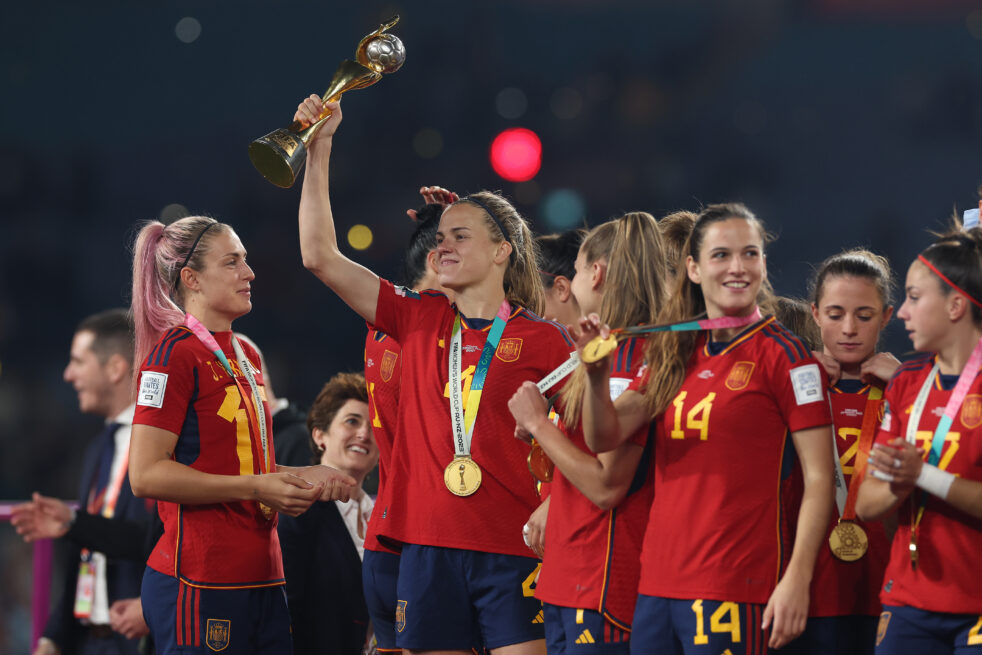In the most recent FIFA world rankings published on Aug. 25, the top spot changed for the first time in six years. Instead of the United States, Sweden ranked at the top, followed by Spain. The United States stood at third.
The drop directly results from an unexpected round-of-16 exit against Sweden in the 2023 FIFA Women’s World Cup. Rather than winning their third straight title, the United States’ uneven performances in the pre-Cup group stages foretold an early exit for a 2023 team that lacked the dominance of prior years.
The pre-tournament projections for the team can not be understated. Players with championship pedigree from the 2019 title — striker Alex Morgan, wing Megan Rapinoe, midfielder Rose Lavelle, team captain Lindsey Horan, wingback/wing Crystal Dunn and midfielder Julie Ertz — all returned in 2023. Exciting newcomers like aggressive forward Trinity Rodman, the backline defensive duo of Alana Cook and Naomi Girma and goalscoring machine Sophia Smith added a fresh infusion of talent. Some concern stemmed from the injuries Rapinoe and Lavelle were recovering from, as well as notable injury losses in the talented, young forward duo of Catarina Macarino and Mallory Swanson. Veteran playmaking midfielder Sam Mewis also missed her chance to repeat from 2019 due to a serious knee injury.
However, the on-paper roster talent did not smoothly transition to the pitch. The U.S. drew Vietnam first in the group stage and handled their less-talented opponent with relative ease. Smith scored two goals in the first half, while the team put consistent pressure on Vietnam’s defense. The U.S. team won an easy 3-0 game in spite of inspired play from Vietnam goalie Tran Thi Kim Tranh and a missed penalty kick from Alex Morgan.
Against the Netherlands, problems arose. The team struggled in the first half and could not capitalize on any of their close chances. Defensive issues persisted throughout the game; fortunately, the team stayed aggressive and forced a 1-1 draw, largely through the forward trio of Smith, Morgan and Rodman and a timely, second-half goal from Horan off a great corner kick from Lavelle. Although they did not lose, the uneven performance prompted midfielder Andi Sullivan’s candid admission that the team was out of sync. The players appeared puzzled on how to work off each other, and Lavelle’s minutes limitations led to extreme offensive inconsistency.
Things failed to improve against Portugal. For ninety-one minutes, the USA’s chances of advancing to the World Cup looked grim against a team they had beaten in 10 straight games. They failed to finish their shots, turned the ball over carelessly and looked sloppy despite Lavelle starting for the first time. Attempting 17 shots with four on-goal is not a winning recipe, and previous concerns over the team’s lackluster offense only grew louder. The American defense remained excellent, but if not for Portugal forward Ana Capeta’s shot harmlessly hitting the post, the United States very well could have missed the World Cup entirely.
Their struggles came to a head in the knockout round against Sweden. Team manager Vlatko Andonovski made a formation change from a 4-3-3 to a 4-2-3-1 formation that promotes spaced defensive play, a variety of passing lanes and controlled time of possession on offense. The forward play remained excellent, and the team looked more fluid and cohesive in comparison to the other two games. However, their finishing struggles ultimately lost them the game. Similar to the Portugal game, they attempted 22 shots and 11 on goal, but failed to get anything past Swedish goalkeeper Zecira Musovic. The hard-fought match came down to a tense penalty shootout that went back and forth. Ultimately, three straight misses from the talented trio of Rapinoe, Smith and substitute Kelly O’Hara set up the game-winner from Sweden’s Lina Hurtig. The shot deflected off the hands of U.S. goalkeeper Alyssa Naeher and inched past the goalline as she hit it upwards.
This World Cup is the last for legends like Megan Rapinoe and Julie Ertz, who ended a decorated international career in an unexpected fashion. While Alex Morgan dismissed retirement concerns immediately following the loss, it is fair to question her return in 2027 given she will be 40 years old at the tournament. Andonovski stepped down after the tournament, so the U.S. will have a new voice overseeing the team’s direction. That new voice could pair well with a roster in transition to more of a youthful movement. Rodman, Smith, Macarino and Girma are all future pieces that could be pivotal in an improved performance in 2027.
Ultimately, the U.S. national team must change its philosophy and unlock the strengths of its roster. Currently, the team features aggressive scoring threats, but lacks the connective pieces to set those scorers up for finishing. Creators like Lavelle are desperately needed, and it is up to U.S. soccer to develop and identify those talents. Otherwise, the rapid improvements of the international talent pool will catch up to the team. Their dominance is no longer assured — it is time for them to rest, retool and prepare to rewrite the narrative in four years.
